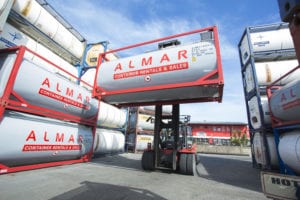While environmentalists rejoiced at the ban of hazardous
liquid waste being disposed of at landfill, generators of liquid waste, waste
management companies and landfill sites have had to find environmentally sustainable
and cost-effective solutions quickly, in order to abide by the new law.
The latest prohibitions on waste disposal to landfill in the
National Environmental Management: Waste Act (No. 59 of 2008) regulations focus
not only on hazardous waste with a calorific value >20 MJ/kg, but have taken
the major step to include all types of hazardous liquid waste with a moisture
value >40%.
The ban on liquid waste being dumped at landfill sites,
which came into effect on 23 August 2019, means that nearly one million tonnes
of hazardous liquid waste produced in South Africa annually will now have to
either be transported to a different waste management facility, pre-processed
to produce alternative fuel resources (AFRs) and alternative raw materials
(ARMs), or stabilised by binding the liquid waste with ash, lime and chemicals
and converted into gel.
According to Francois du Plessis, CEO, Almar Container
Group, the reinforcement of the regulation, which was first tabled in
Parliament in 2013, has brought about an increased demand for the bulk storage
of liquid waste. “The demand for ISO tanks has increased since the announcement
and we believe the reason for this could be twofold – the on-site storage time
has increased while waste generators find solutions for the disposal of the
waste, and recycling or converting the waste is costly, so companies are
looking at where they can cut costs,’’ he explains.
A need for liquid waste storage
Du Plessis says companies are starting to recognise that storage is an area where they can save money and this also impacts positively on transportation costs. “In our experience, companies make use of 44 gallon drums or IBCs (immediate bulk containers), which involves substantial manpower to unload, fill, seal and load for transportation and, depending on the liquid being stored, are often single-use. “Generators are realising that ISO tank containers, known as ISOtainers, are a better solution because they can store 26 000 litres and the containers are stackable. With space, time and budget being a priority for generators, we have had to refocus our attention to meet this demand,” he says. “As we know, amendments in regulations have a ripple effect and often impact businesses unrelated to the industry to which they apply.”
Change already happening
Geocycle South Africa, a subsidiary of Lafarge South Africa and a member of the international LafargeHolcim group, has been impacted by the new legislation. Geocycle and Lafarge are licensed by the Department of Environment, Forestry and Fisheries (DEFF) to operate facilities producing AFRs and ARMs for cement. Geocycle has been providing pre-processing services for the supply of various recycled, high-calorific-value materials, such as industrial oil sludge, to be used as fuel in the Lafarge cement kilns. Following the new legislation, Brent Mahoney, managing director of Geocycle South Africa, has seen an increase in hazardous liquid waste being directed to them to produce AFRs and ARMs, as opposed to going straight to landfill. “Generators are choosing bulk storage solutions in order to increase efficiencies when it comes to handling and storage of the liquid waste and to use a reusable versus single-use storage option,” he says.The unexpected spin-off
According to the DEFF’s Albie Modise, a key benefit of the liquid waste legislation is that the country’s groundwater reserves will receive protection from seeping hazardous liquids. Leachate from landfills is difficult to manage and treat, and has the potential to seep into groundwater pools. An unexpected environmental spin-off from the reinforcement of this legislation has been the increased demand for bulk liquid storage, which has led to a reduction in transportation and, in turn, a reduction in carbon emission.







